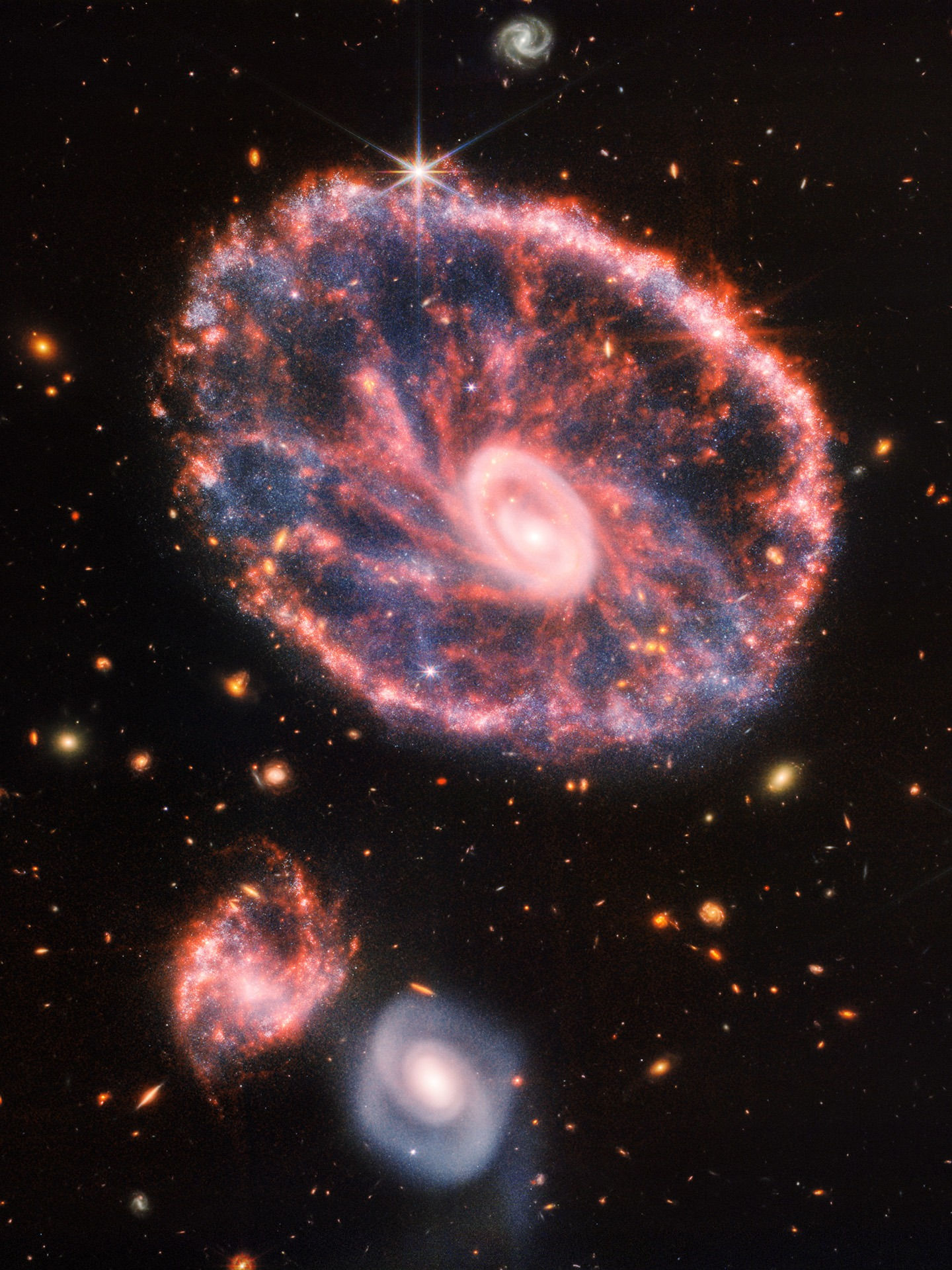Unlocking the Secrets of Space: Exploring the Galaxy
- scottlgarwood
- Jun 14, 2024
- 4 min read
Updated: Jun 19, 2024
Welcome to Phystro, the ultimate destination for staying updated on the newest developments in science and technology.
Today, we set off on an exploration of the immense universe, uncovering the enigmas hidden within our galaxy.
Join us as we delve into topics ranging from the birth of stars to the mysterious occurrences surrounding black holes, revealing the fascinating secrets of outer space.
The Birth of Stars

Stars are essential components of galaxies and their creation is a fundamental process in the universe.
They originate from dense gas and dust clouds called nebulae, which collapse due to gravity, resulting in the emergence of a protostar.
When the core temperature increases, nuclear fusion begins, marking the birth of a star.
Stellar Nurseries
Regions of active star formation are often referred to as stellar nurseries. The Orion Nebula, located about 1,350 light-years away, is one of the most studied stellar nurseries.

Image: The Orion Nebula. Credit: NASA, ESA, M. Robberto (Space Telescope Science Institute/ESA) and the Hubble Space Telescope Orion Treasury Project Team.
It offers astronomers a peek into the initial phases of star formation and the complex mechanisms that control it.
The Life Cycle of Stars

Stars, similar to living beings, go through life cycles that are determined by their mass.
Stars with low to medium mass, such as our Sun, will expand into red giants before releasing their outer layers and forming a white dwarf core.
In contrast, high-mass stars conclude their existence with dramatic supernova explosions, leading to the creation of neutron stars or black holes.
Supernovae: Cosmic Fireworks
Supernovae rank as some of the most potent occurrences in the cosmos.

They signify not only the end of a star's life but also play a role in generating heavy elements like gold and uranium.
These elements are subsequently scattered into space, enhancing the interstellar medium and laying the groundwork for upcoming stellar and planetary formations.
The Enigma of Black Holes
Black holes are areas in space-time where gravity is incredibly strong, preventing anything, including light, from escaping.
They originate from the leftovers of large stars following a supernova explosion.
The event horizon, which encircles a black hole, marks a boundary that once crossed, cannot be reversed.

Types of Black Holes
Black holes exist in different sizes.
Stellar-mass black holes, created from single stars, usually range in mass from 3 to 10 times that of the Sun.
Supermassive black holes, located in the cores of galaxies, can be millions or even billions of times more massive than the Sun.
At the heart of the Milky Way lies a supermassive black hole known as Sagittarius A*.
The Galactic Dance: Structure and Dynamics
The Milky Way, our galaxy, is a type of barred spiral galaxy with billions of stars, planets, and other celestial bodies.
It consists of a central bulge, spiral arms, and a large halo of dark matter.
Studying the Milky Way's structure and movement allows astronomers to uncover its past and changes over time.

Spiral Arms: Star-Forming Regions
The spiral arms of the Milky Way are areas where stars form actively.
They are not stationary features but instead are waves of density that move through the galaxy, squeezing gas and causing the creation of new stars.
Our solar system is situated in the Orion Arm, a smaller arm of the Milky Way.
Dark Matter and Dark Energy
In spite of the considerable progress made in comprehending the universe, many aspects remain veiled in mystery.
Dark matter and dark energy make up approximately 95% of the total mass-energy in the universe, but their true essence continues to elude us.
Dark Matter: The Invisible Glue
Dark matter is believed to act as the unseen force that binds galaxies together.
Even though it does not give off, take in, or bounce back light, its existence is deduced from the gravitational impact it has on observable matter.
The presence of dark matter is essential for the creation and endurance of galaxies.
Dark Energy: The Accelerating Universe
Dark energy, a mysterious force, is responsible for the universe's accelerated expansion.
Unveiled in the late 1990s, dark energy poses a challenge to our comprehension of cosmology and the destiny of the universe, standing as one of the most profound inquiries in contemporary physics.
The Quest for Extra-terrestrial Life

A captivating inquiry in the realm of science revolves around the possibility of our solitude in the vast universe.
Scientists are dedicated to exploring habitable exoplanets and searching for signs of life beyond Earth.
Exoplanets: Worlds Beyond Our Solar System

The detection of exoplanets, which are planets circling stars beyond our solar system, has transformed our comprehension of planetary systems.
Thousands of exoplanets have been pinpointed by the Kepler Space Telescope, with some located in the potentially habitable zone conducive to supporting life.
The Search for Biosignatures
Biosignatures, like particular atmospheric gases or surface characteristics, serve as signs of life.
Missions such as the James Webb Space Telescope are focused on examining the atmospheres of exoplanets in order to detect potential signs of life outside of our planet.
Conclusion: The Endless Frontier
Exploring our galaxy is an exciting journey of discovery and amazement.
By uncovering the mysteries of space, we gain knowledge about the origins of stars, the behavior of galaxies, and the potential for extraterrestrial life.
Keep following Phystro for the most recent updates on science and technology as we continue to unravel the enigmas of the universe.
By venturing into the vastness of space, we not only quench our thirst for knowledge but also enhance our comprehension of the cosmos and our role within it.
The exploration of the galaxy represents an infinite frontier, brimming with astonishing revelations and profound inquiries that fuel the pursuit of wisdom.
Note: This article was generated based on a series of prompts given to generative AI for informational and educational purposes. The content prompt highlights the latest discoveries and trends in science and technology in 2024. Images sourced from opensource, generative, and free use websites.






























































































Comments